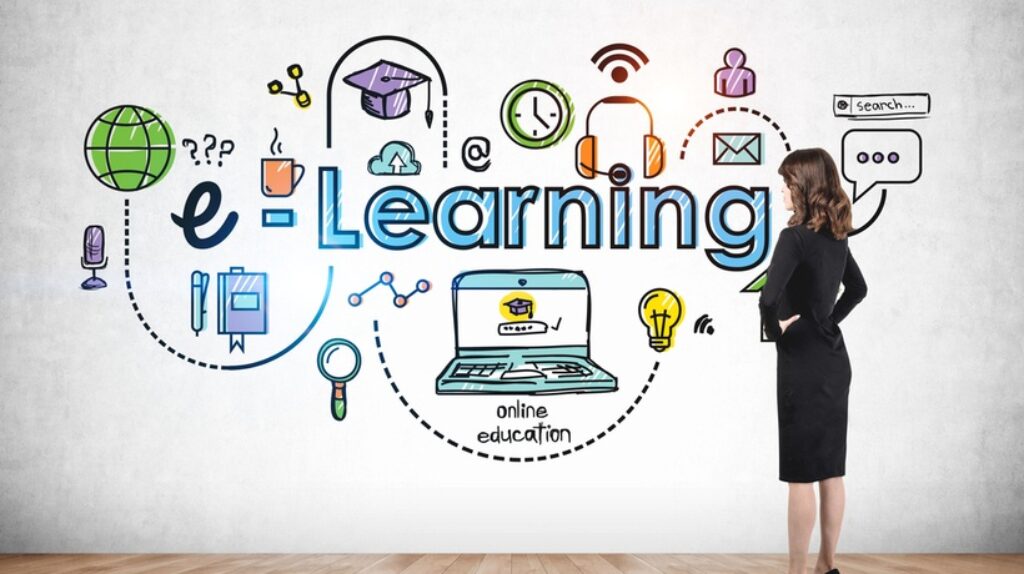
eLearning software refers to a digital solution designed to facilitate the creation, delivery, and management of educational content in an online environment. It encompasses a range of technologies, including learning management systems (LMS), virtual classrooms, and interactive multimedia modules. By harnessing the power of technology, such software enables learners to access educational materials anytime, anywhere, using various devices such as computers, tablets, and smartphones.
The impact of eLearning software on businesses cannot be overstated. It offers a myriad of benefits that align with the rapidly changing landscape of education and training. First and foremost, it provides organizations with a scalable and cost-effective solution for delivering training and development programs to their employees. Gone are the days of scheduling traditional classroom sessions, as eLearning allows for self-paced learning, reducing time and logistical constraints.
Moreover, it empowers businesses to create customized courses tailored to their specific needs and branding. Whether it’s onboarding new employees, upskilling the workforce, or launching product training, such platforms offer a flexible and consistent learning experience, ensuring that every learner receives the same high-quality content and instruction.
Another significant advantage is its ability to track and manage learner progress. With robust management systems in place, organizations can easily monitor individual performance, assess knowledge retention, and identify areas for improvement. This data-driven approach enhances training effectiveness and enables businesses to make data-backed decisions for optimal performance. Are you searching for a trusted eLearning software development company? Your search ends here! At Evrone, we specialize in creating cutting-edge eLearning solutions that revolutionize the way education and training are delivered.
Table of Contents
How Does Elearning Software Development Work?

Source: https://elearningindustry.com/tips-for-successful-elearning-development-services
To successfully develop eLearning software, it is crucial to follow a systematic and well-defined process. The development cycle typically consists of several key phases that ensure the creation of a high-quality and effective solution. Let’s explore each phase in detail:
- Analysis – The first phase involves conducting a comprehensive analysis of the learning objectives, target audience, and content requirements. This step helps identify the specific needs and goals of the project. Gathering data, conducting surveys, and analyzing existing resources are essential to creating a solid foundation for the development process.
- Design – Once the analysis phase is complete, the design phase begins. Designers collaborate with subject matter experts to outline the overall structure of the course or platform. This includes defining the information architecture, creating a user-friendly interface, and developing engaging multimedia elements. The design phase ensures that the software aligns with the learning objectives and provides an optimal user experience.
- Development – Developers leverage various programming languages and tools to build interactive modules, quizzes, assessments, and other components of the eLearning solution. This phase involves coding, content integration, and the implementation of user interactivity features.
- Evaluation and Implementation – Once the development phase is complete, the eLearning software undergoes rigorous testing and evaluation. Quality assurance professionals assess the functionality, usability, and compatibility of the software. Feedback from users and stakeholders is collected and incorporated into the final product. After a thorough evaluation, the software is ready for implementation, making it accessible to the target audience.
- Translation – In situations where the eLearning software caters to a multilingual audience, translation plays a vital role. Textual content, audio scripts, and captions are translated into different languages, ensuring inclusivity and accessibility for a global user base. Accurate translation preserves the content’s integrity and delivers an optimal learning experience to diverse learners.
- LMS Hosting – Finally, the eLearning software needs a reliable hosting solution. Learning Management System (LMS) hosting involves deploying the software on a secure and scalable platform. This ensures smooth performance, seamless content delivery, and efficient user management. LMS hosting allows learners to access the solution easily and facilitates administrative tasks such as user tracking, course enrollment, and progress monitoring.
Types of elearning Software

Source: https://elearningindustry.com/4-types-elearning-solutions-to-boost-your-business
When it comes to eLearning software, there are several types available, each serving specific purposes and offering unique benefits. Let’s explore some of the most prominent types:
- Comprehensive or All-in-One Software – Comprehensive eLearning software aims to provide a complete solution by integrating various functionalities into a single platform. It typically includes content creation tools, assessment modules, collaboration features, analytics, and more. The purpose of comprehensive software is to offer end-to-end support for creating, delivering, and managing courses. The benefits of comprehensive software lie in its convenience and efficiency, as it eliminates the need for multiple tools or platforms. It streamlines the eLearning development process, enhances content consistency, and simplifies administration and tracking.
- Online Authoring Tools – Online authoring tools are specifically designed to simplify the creation and development of eLearning content. They often feature intuitive interfaces, drag-and-drop functionality, and pre-built templates. The purpose of online authoring tools is to empower subject matter experts and instructional designers to create engaging and interactive eLearning modules without extensive programming knowledge. The benefits of online authoring tools include time and cost savings, rapid content creation, flexibility in customization, and the ability to update content easily.
- Learning Management System (LMS) – A Learning Management System is a software application that facilitates the administration, delivery, tracking, and reporting of eLearning courses. The purpose of an LMS is to manage course enrollment, deliver learning materials, track learner progress, and generate reports. The benefits of an LMS include streamlined course management, learner tracking and assessment, customizable learning paths, collaboration features, and data-driven insights for continuous improvement.
- Learning Experience Platforms (LXP) – Learning Experience Platforms focus on creating personalized and engaging learning experiences for individual learners. LXPs prioritize learner-centric approaches, offering features such as personalized content recommendations, social learning, competency-based assessments, and learner-driven pathways. The purpose of LXPs is to enhance learner engagement, self-directed learning, and knowledge retention. The benefits of LXPs include a learner-centered approach, increased motivation and engagement, personalized learning paths, social collaboration, and the ability to adapt to different learning styles.
Conclusion
In conclusion, eLearning software development has revolutionized the way businesses approach education and training. With its flexible and scalable nature, eLearning software provides a dynamic platform for delivering content, enhancing the learning experience, and meeting the diverse needs of learners. From comprehensive all-in-one solutions to online authoring tools, Learning Management Systems (LMS), and Learning Experience Platforms (LXP), organizations have a range of options to choose from based on their specific requirements.
The benefits of eLearning software are numerous. It offers cost-effective training solutions, personalized learning experiences, and the ability to track and assess learner progress. Businesses can customize courses to their brand and ensure consistent content delivery across different locations and devices. Moreover, eLearning software empowers learners to access educational materials at their convenience, fostering self-paced learning and eliminating geographical constraints.
By embracing eLearning software, businesses can optimize their training and educational initiatives, achieve higher learner engagement and knowledge retention, and adapt to the ever-evolving digital landscape. As technology continues to advance, eLearning software will continue to play a crucial role in shaping the future of education and training, empowering individuals and organizations to thrive in a rapidly changing world.







